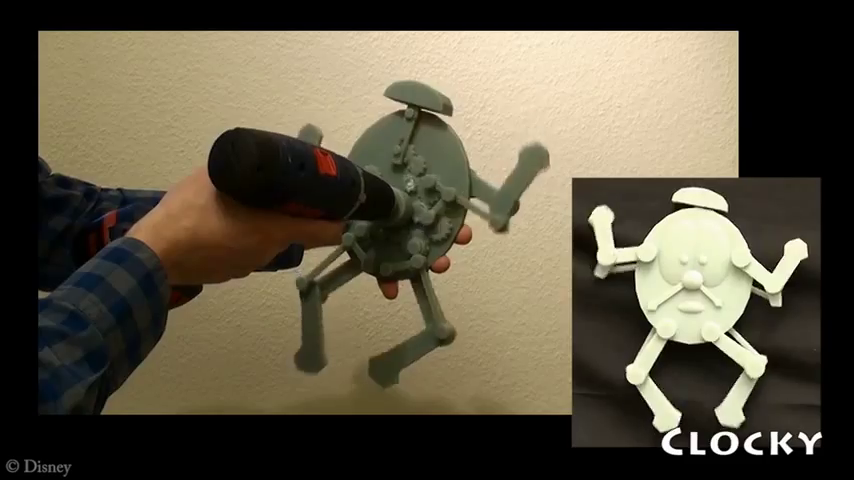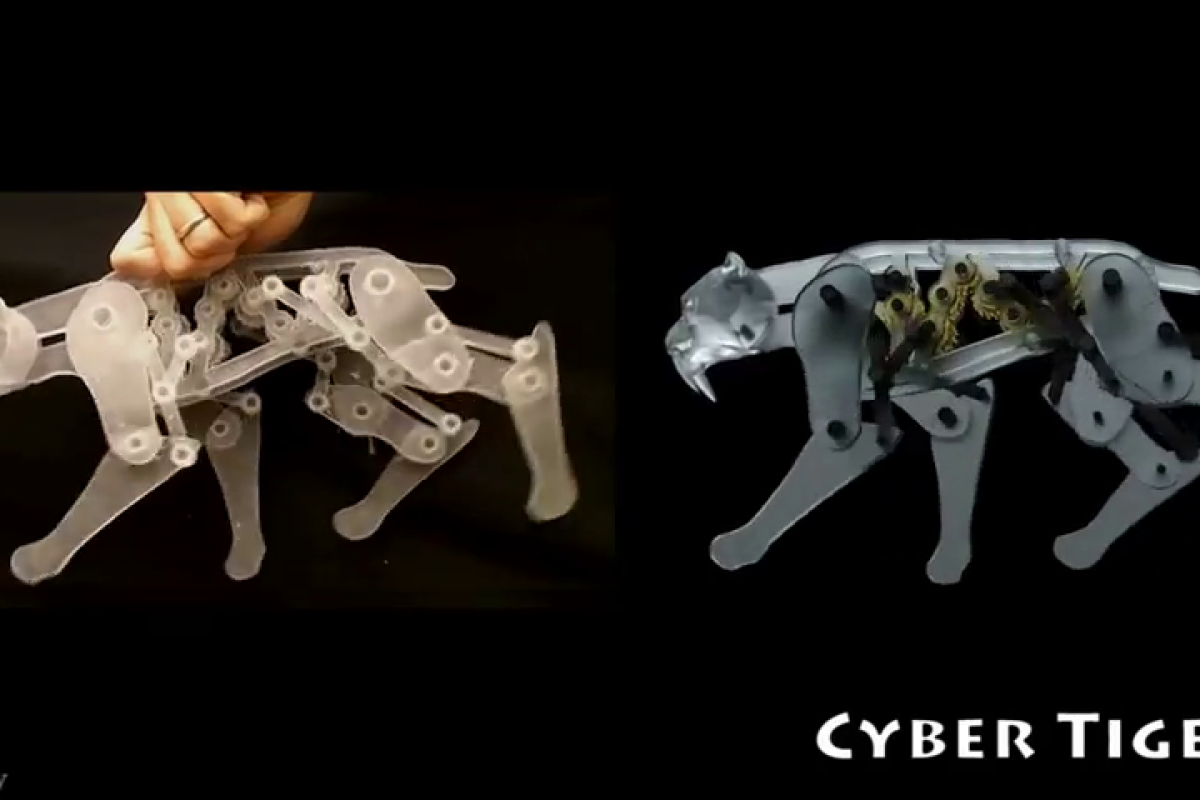Mechanized characters, such as clockwork automatons that move using a series of gears, go back hundreds of years. Now the most difficult aspect of their mechanical design, which took specialized engineering skill and lots of trial and error, has largely been eliminated by a pair of new software tools developed by Disney Research labs in Zürich and Boston, and labs at ETH Zürich and MIT. They're being presented this week at ACM SIGGRAPH 2013, the International Conference on Computer Graphics and Interactive Techniques.
The first set of tools allows a designer to load an articulated character model into the software, where they define the actuation points on its joints. Then by simply drawing a curve to represent the desired path of a joint, the software automatically builds and optimizes the mechanical assembly that will produce it. The software then optimizes the whole assembly for fabrication (such as 3D printing). Currently the software only generates cyclical motions, such as walking or dancing, but the cool thing is the movements are driven by only a single motor.

The second set of tools allows the creation of elastic figures that move by deformation rather than articulation, such as jelly monsters, plants and jiggling buildings, from digital characters. A 3D character is loaded into the software in its neutral shape along with duplicates that have already been posed to serve as target shapes.
Actuation points are then assigned by the user or generated automatically by the software to suit different actuators such as strings, pins, or clamps. The software calculates what parts of the character ought to be rigid or soft to allow for movement without changing its overall appearance. For example, flexible materials might be placed around the joints, while the limbs themselves would be rigid. 3D printing or another rapid manufacturing technique can then be used to fabricate the character.
The researchers tested the software by designing ten animated characters, which took about a half an hour apiece. Then seven of the characters were fabricated using 3D printing technology. It's unclear if Disney will ever release the software to the general public, but with the growing interest in 3D printers it would be a boon to artists everywhere.
In the meantime, the team continues to develop the software with a more ambitious goal in mind. "Our research brings us one step closer to the rapid design and manufacture of customized robots that can sense and interact with their environments to carry out complex tasks," says Steliam Cross, an associate research scientist at Disney Research, Zürich, suggesting that Disney plans to incorporate more complex animatronics into its attractions.
This follows recent announcements from Disney Research including software that can imitate an artist's drawing style and another that builds detailed 3D models from video footage. See the software, and the mechanical characters come to life, in the video below.
Source: Disney Research via IEEE Spectrum

























